Disclosure: This article contains affiliate links. We may earn a commission from purchases at no extra cost to you, which helps our travel content.
The juxtaposition couldn't be more striking—standing 1,300 feet below sea level while gazing up at mountains that have witnessed millennia of human civilization. Having presided over international cases for decades, I find a different kind of judgment called for here: how to reconcile the harsh, almost lunar landscape of the Dead Sea Basin with its surprising ecological resilience and historical significance. This winter marks my third expedition to these trails, where biblical narratives and geological marvels converge in what I've come to regard as one of Earth's most compelling courtrooms of natural history.
The Legal Brief: Understanding the Geological Jurisdiction
As someone who has spent decades examining evidence in trade disputes, I approach these mountains with the same analytical mindset. The Dead Sea Basin isn't merely a tourist destination—it's a living testament to tectonic forces that created the deepest continental depression on Earth.
This remarkable landscape sits along the Dead Sea Transform fault system, where the Arabian and African plates have been grinding past each other for millions of years. The evidence is compelling: dramatic escarpments rising over 1,200 meters from the valley floor, salt formations that resemble exhibits in Earth's geological museum, and the hypersaline waters of the Dead Sea itself—a body so dense with minerals that swimming becomes floating.
Winter hiking here presents a particular advantage: temperatures hover between 15-24°C (59-75°F), compared to the sweltering 40°C+ (104°F+) summer heat that would constitute cruel and unusual punishment for any hiker. The clarity of winter air also provides superior visibility for photography and geological observation.
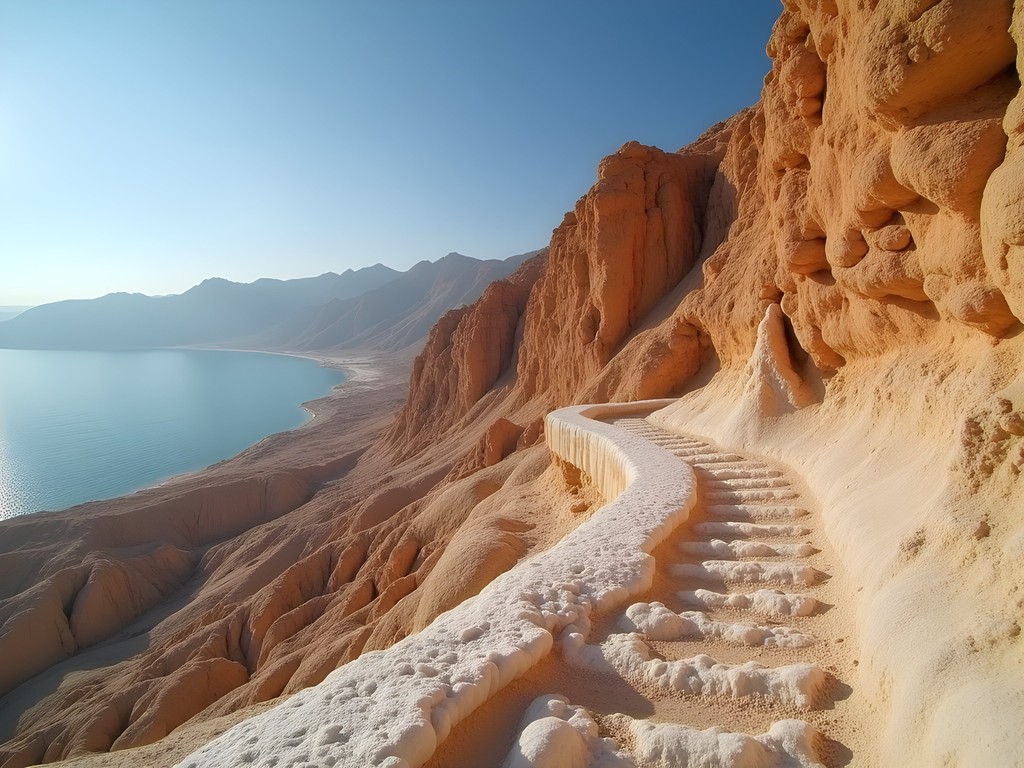
💡 Pro Tips
- Pack microspikes for unexpected icy patches on higher elevations
- Carry at least 3 liters of water per person per day despite cooler temperatures
- Download offline geological maps to identify formations along the trails
The Mount Sodom Circuit: Walking Through Biblical Precedent
Mount Sodom presents perhaps the most compelling case study in the region's geological jurisprudence. Composed almost entirely of salt (98%), this 3km-long mountain rises 230 meters above the Dead Sea's southwestern shore. The biblical associations with Lot's wife turned to salt add cultural weight to what is already a remarkable natural phenomenon.
The 5km circuit around Mount Sodom requires advanced hiking experience, particularly in winter when flash floods can transform dry wadis into raging torrents with little warning. I've found the eastern face particularly striking at sunrise, when first light illuminates the salt crystals into a shimmering display that no photograph can fully capture.
During my last winter expedition, I navigated the narrow passages between salt pillars with my trekking poles, which proved invaluable on the unstable salt-crystal terrain. The trail requires careful attention to markers, as salt erosion frequently alters the landscape, making previous paths obsolete—not unlike how precedent evolves in legal systems.
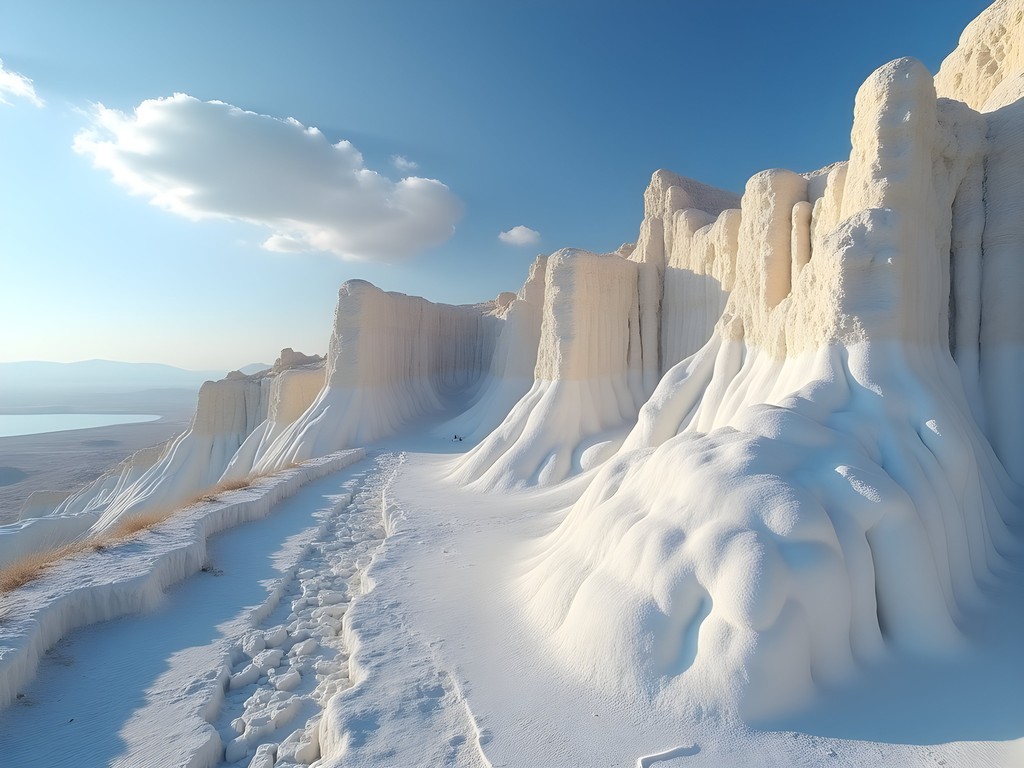
💡 Pro Tips
- Start the Mount Sodom circuit before 8 AM to capture the best morning light on salt formations
- Wear closed, ankle-supporting footwear with good grip as salt surfaces can be unexpectedly slippery
- Bring polarizing lens filters for photography to cut glare from salt crystals
Ein Gedi to Masada: The Ancient Highway
The 15km trail connecting the Ein Gedi Nature Reserve to the fortress of Masada represents what I've come to call 'the ancient highway'—a path that has witnessed the passage of everyone from King David to Roman legions. This advanced route demands proper preparation, especially in winter when daylight hours are limited.
The trail begins in the lush oasis of Ein Gedi, where freshwater springs support remarkable biodiversity in stark contrast to the surrounding desert. The ascent from Ein Gedi follows wadis that can transform dramatically after rainfall. During my December hike last year, I witnessed desert wildflowers emerging from seemingly barren ground—a testament to nature's resilience that reminded me of how communities adapt to challenging circumstances, a parallel to cases I've adjudicated involving resource-stressed regions.
As the path climbs toward Masada, hikers are rewarded with panoramic views of the Dead Sea and Jordan's mountains beyond. I've found my satellite messenger essential on this remote stretch where cell coverage is nonexistent. The device's ability to send emergency messages via satellite provides security without compromising the wilderness experience.
The final approach to Masada, with its stark silhouette against the desert sky, never fails to evoke reflection on the human will to survive against overwhelming odds—a narrative that resonates across civilizations and centuries.
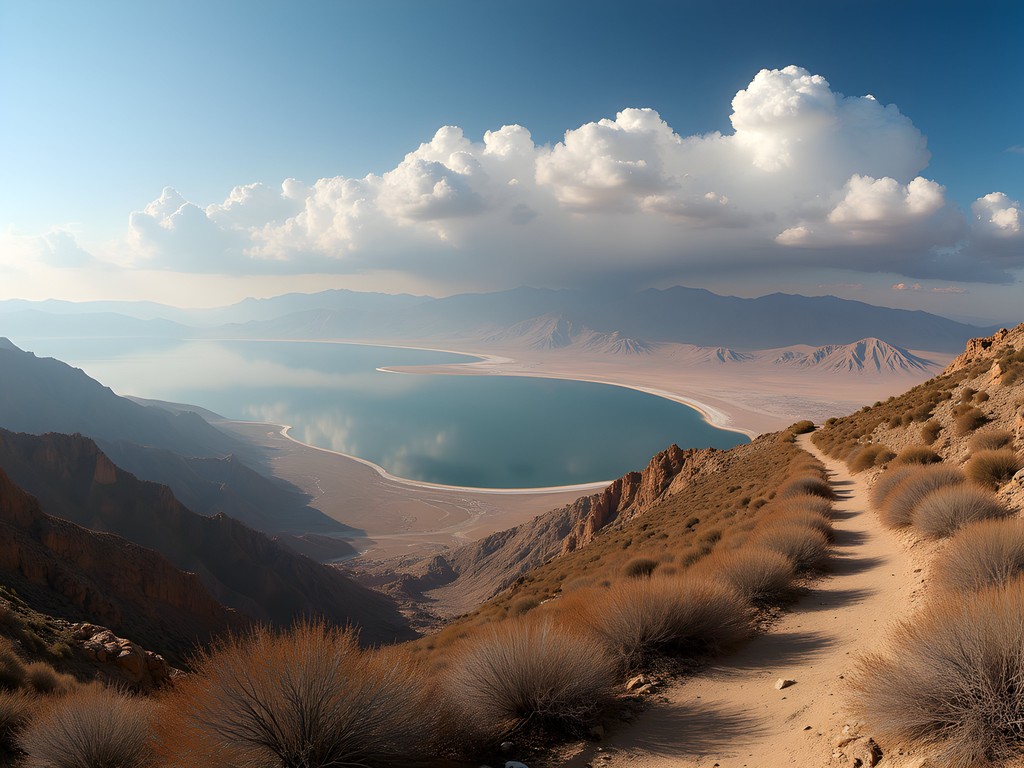
💡 Pro Tips
- Register your hiking plan with Israel Nature and Parks Authority before attempting this trail
- Carry a minimum of 5 liters of water per person for this full-day hike
- Start no later than 7 AM to ensure completion before sunset, especially in winter months
The Darga Canyon: A Test of Physical Jurisprudence
If the Dead Sea region were to present a supreme test of a hiker's abilities, Darga Canyon would be that challenge. This deep limestone gorge cuts through the Judean Desert, creating one of the most technically demanding hikes in Israel—a case where physical laws supersede all others.
The 10km route requires scrambling, navigating narrow passages, and occasional rappelling down waterfalls (particularly after winter rains). Having grown up in San Antonio's semi-arid environment, I've always been fascinated by desert water systems, but nothing prepared me for the dramatic flash flood I witnessed here two winters ago. Within minutes, the dry canyon transformed into a roaring torrent—a visceral reminder of nature's power and unpredictability.
For this challenging route, I rely on my dry bag to keep essential documents and electronics protected during water crossings. The bag has proven its worth multiple times, particularly when negotiating the deep pools that form in the canyon's lower sections during winter.
For navigation, I've found the hiking GPS invaluable, as canyon walls can limit both visibility and satellite phone reception. The ability to mark waypoints at critical junctions has helped me maintain orientation in this complex terrain.
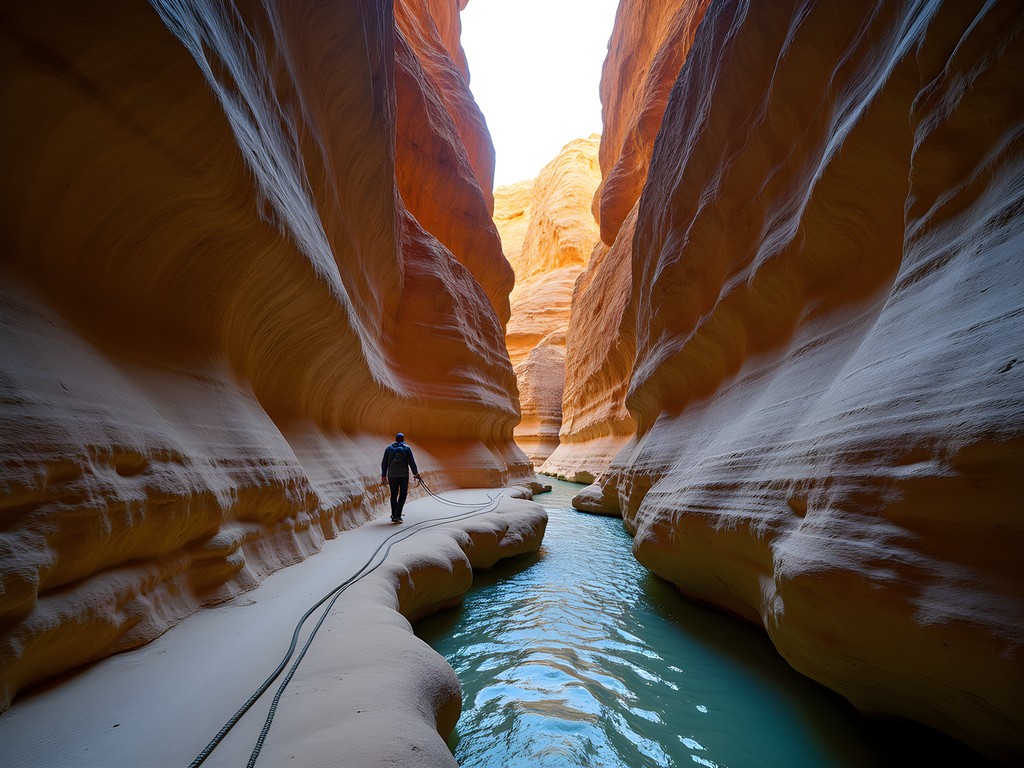
💡 Pro Tips
- Never attempt Darga Canyon if there's any rain forecast in the region, even if it's sunny at your location
- Bring 15 meters of auxiliary rope for assistance on steep sections
- Consider hiring a local guide for first-time attempts, as some sections are not clearly marked
Desert Conservation: The Environmental Verdict
As both a legal professional and environmental advocate, I find the conservation challenges facing the Dead Sea Basin particularly compelling. The sea itself is receding at an alarming rate—over one meter per year—due to water diversion from the Jordan River and mineral extraction operations.
Hiking these trails provides firsthand evidence of this environmental case: newly exposed shorelines, abandoned docks now hundreds of meters from water, and expanding sinkholes that have swallowed sections of roads and buildings. Yet winter brings a temporary reprieve, with seasonal rains feeding ephemeral streams that briefly restore flow to parched wadis.
During my explorations, I've been impressed by Israel's water management technologies being implemented in the region. This portable system, which I now carry on all desert hikes, allows filtration of brackish water sources when necessary—a small-scale version of the massive desalination projects attempting to address the region's water crisis.
The juxtaposition of ancient sustainable practices and modern technological solutions creates a fascinating study in human adaptation. From Nabatean water-harvesting techniques still visible in the landscape to modern drip irrigation systems, the region demonstrates how civilizations past and present have confronted similar resource challenges—a theme that has guided my post-judicial career and writing.

💡 Pro Tips
- Support conservation by staying on marked trails to prevent erosion in fragile desert ecosystems
- Consider volunteering with Dead Sea conservation groups that organize cleanup hikes
- Learn about traditional water harvesting techniques that have sustained desert communities for millennia
Final Thoughts
As I complete my week of winter hiking in this remarkable basin—Earth's lowest terrestrial courtroom—I'm struck by how the legal principles that guided my career find echoes in these ancient landscapes. The mountains surrounding the Dead Sea present their evidence in layers of rock and salt, testifying to forces that have shaped this land since long before human civilization emerged to interpret them. The verdict? This harsh yet magnificent terrain demands our respect, preparation, and conservation efforts if future generations are to experience its power.
For those considering their own expedition to these trails, I urge thorough preparation, respect for local regulations, and a willingness to see beyond the tourist veneer to the complex ecological and historical narratives beneath. Whether you're drawn by biblical connections, geological wonders, or simply the challenge of hiking in one of Earth's most dramatic landscapes, the Dead Sea Basin will render its judgment on your preparedness—and reward the diligent with experiences beyond measure. The gavel falls, but the case of this remarkable region remains perpetually open for further discovery.
✨ Key Takeaways
- Winter offers ideal hiking conditions with moderate temperatures and clearer visibility
- Advanced preparation is essential for the technical challenges and remote nature of these trails
- The region provides unique insights into both geological processes and human history spanning millennia
📋 Practical Information
Best Time to Visit
November through March
Budget Estimate
$600-800 per person for a week (excluding flights)
Recommended Duration
5-7 days
Difficulty Level
Challenging
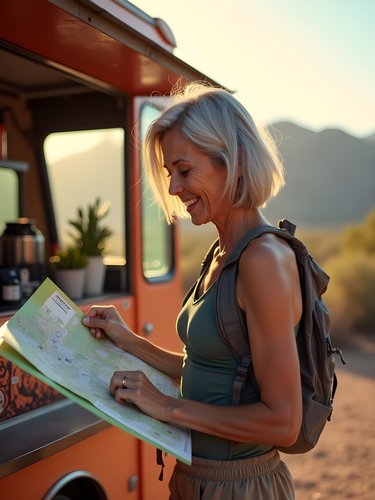
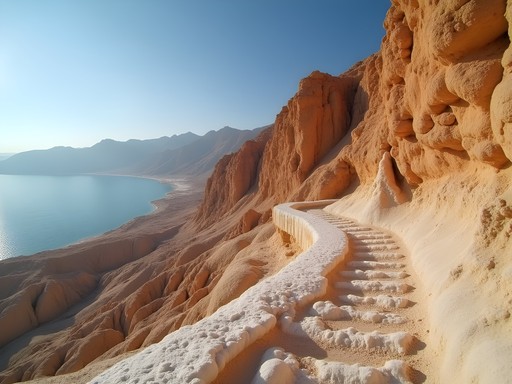
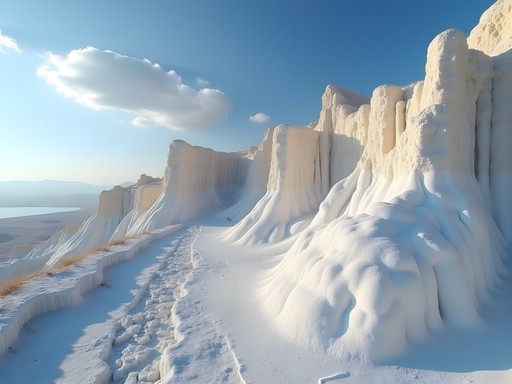
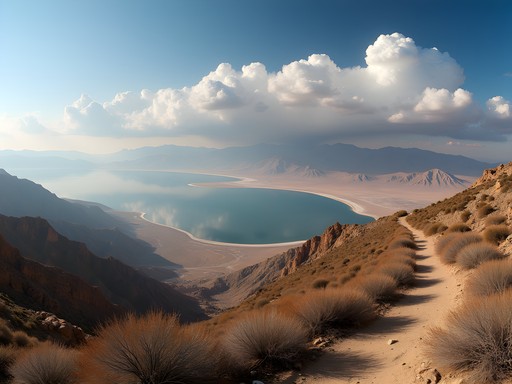
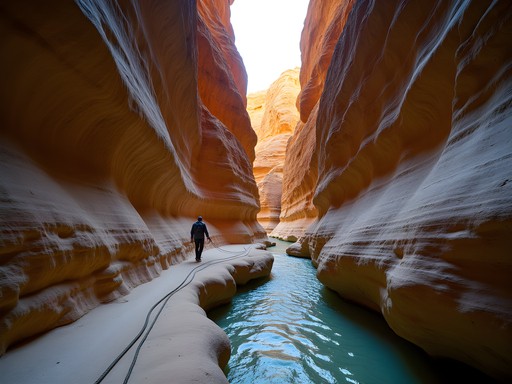











Comments
Kimberly Murphy
Absolutely loved this post, Samantha! I hiked the Ein Gedi to Masada route last year and it was truly spectacular. The contrast between the turquoise Dead Sea and the rugged mountains is something that photos can't fully capture. One tip for anyone planning this trek - start VERY early in the morning, especially if you're going between April-October. The heat becomes unbearable by 10am. I used my hydration backpack which was a lifesaver for staying hydrated while keeping hands free for those scrambling sections. Did you get a chance to explore any of the Jordanian side trails? I've heard they're less crowded but equally stunning.
Samantha Spencer
Thanks Kimberly! Great point about the early starts - it's absolutely essential. I didn't make it to the Jordanian trails this time, but they're high on my list for my next visit. I've heard the Wadi Mujib trek is incredible!
redmood
Kimberly - would you say the Ein Gedi trail is doable for someone with knee issues? My partner wants to join but is concerned about steep descents.
Kimberly Murphy
Hi redmood! The main Ein Gedi Nature Reserve trails vary in difficulty. The Nahal David trail is relatively gentle and suitable for most fitness levels. However, if you're doing the full route to Masada, there are definitely some challenging sections that might be tough on the knees. Trekking poles would be a good idea!
escapelegend
That view from Mount Sodom is unreal! Great post.
redmood
This looks amazing! How difficult would you say the Darga Canyon hike is for someone with moderate experience? Planning a trip there in January.
Samantha Spencer
Hi redmood! Darga Canyon is definitely challenging - I'd rate it moderate to difficult. January is actually a great time to go as temperatures are manageable. Just make sure you have proper footwear and plenty of water. The scrambling sections require some upper body strength too!
redmood
Thanks for the info! Definitely bringing my hiking boots then.
hikingdad456
Just got back from doing the Darga Canyon trail and wow - your description of it as a 'test of physical jurisprudence' is spot on! Those narrow passages were challenging but exhilarating. One thing I wish I'd known beforehand: the rope sections are no joke. If you're afraid of heights or have upper body strength issues, you might want to skip this one. We saw a couple turn back halfway through. The rest of our group made it and the views were worth every drop of sweat!
smartlover
Thanks for the heads up about the rope sections! I have a slight fear of heights so maybe I'll stick to the Ein Gedi trails.
travelwithpurpose
That sunset photo at Masada is absolutely breathtaking! The colors against the stark landscape are incredible.
desert_wanderer
Did you need special footwear for the salt formations on Mount Sodom? Planning to visit in March.
Samantha Spencer
Good sturdy hiking boots with ankle support worked well for me. The salt can be surprisingly sharp in places, and some sections get slippery. March should have perfect temperatures for hiking!
Stephanie Romano
Samantha, your legal metaphors throughout this post are so clever and unique! We did the Ein Gedi to Masada hike last year with our kids (11 and 9), and it was absolutely breathtaking. The contrast between the harsh desert landscape and those unexpected freshwater springs was magical. One tip for families: we started super early (5:30am) to avoid the worst heat, carried way more water than we thought necessary (and still nearly ran out!), and used hiking poles which were lifesavers on those steep descents. The kids still talk about seeing ibex up close on the trail! Did you encounter any wildlife during your hikes?
Samantha Spencer
Thanks Stephanie! Yes, I saw several ibex families at dawn near Ein Gedi, and some hyrax sunning themselves on rocks. Starting early is definitely key - smart move with the kids! The water situation is no joke out there.
smartlover
How much water would you recommend per person for a 4-hour hike there? Planning my trip for January.
Stephanie Romano
Even in January, I'd say at least 3 liters per person. The air is so dry it sucks moisture right out of you even when it's not hot!
smartlover
Wow, never thought about the Dead Sea having such amazing hiking trails! Always just pictured floating in the water. This is going on my bucket list!
Stephanie Romano
Same here! I always associated it just with the floating experience. Planning to take my kids next spring - they'll be fascinated by the salt formations on Mount Sodom!
smartlover
Let me know how the kids handle the heat! Thinking about taking my nephew but worried about the conditions.
Stephanie Romano
Will do! From what Samantha writes, winter seems like the ideal time for families. Those summer temperatures sound brutal!
globelife
Just got back from doing the Mount Sodom trail last week! The salt caves were mind-blowing. One tip for anyone going - bring WAY more water than you think you need. The dry air is deceptive and we ran out halfway through. Also, the trail markers can be faded in some spots, so download offline maps before you go. The sunset reflecting off all the salt formations was worth every drop of sweat though!
freebackpacker
Thanks for the water tip! How long did the Mount Sodom circuit take you?
globelife
It took us about 5 hours, but we stopped a lot for photos and exploring the salt caves. Could probably do it in 3-4 if you're moving steadily.
vacationnomad
Wow, those salt pillars look like they're straight out of another planet! Added to my bucket list!
Venture X
Premium card with 2X miles, $300 travel credit, Priority Pass